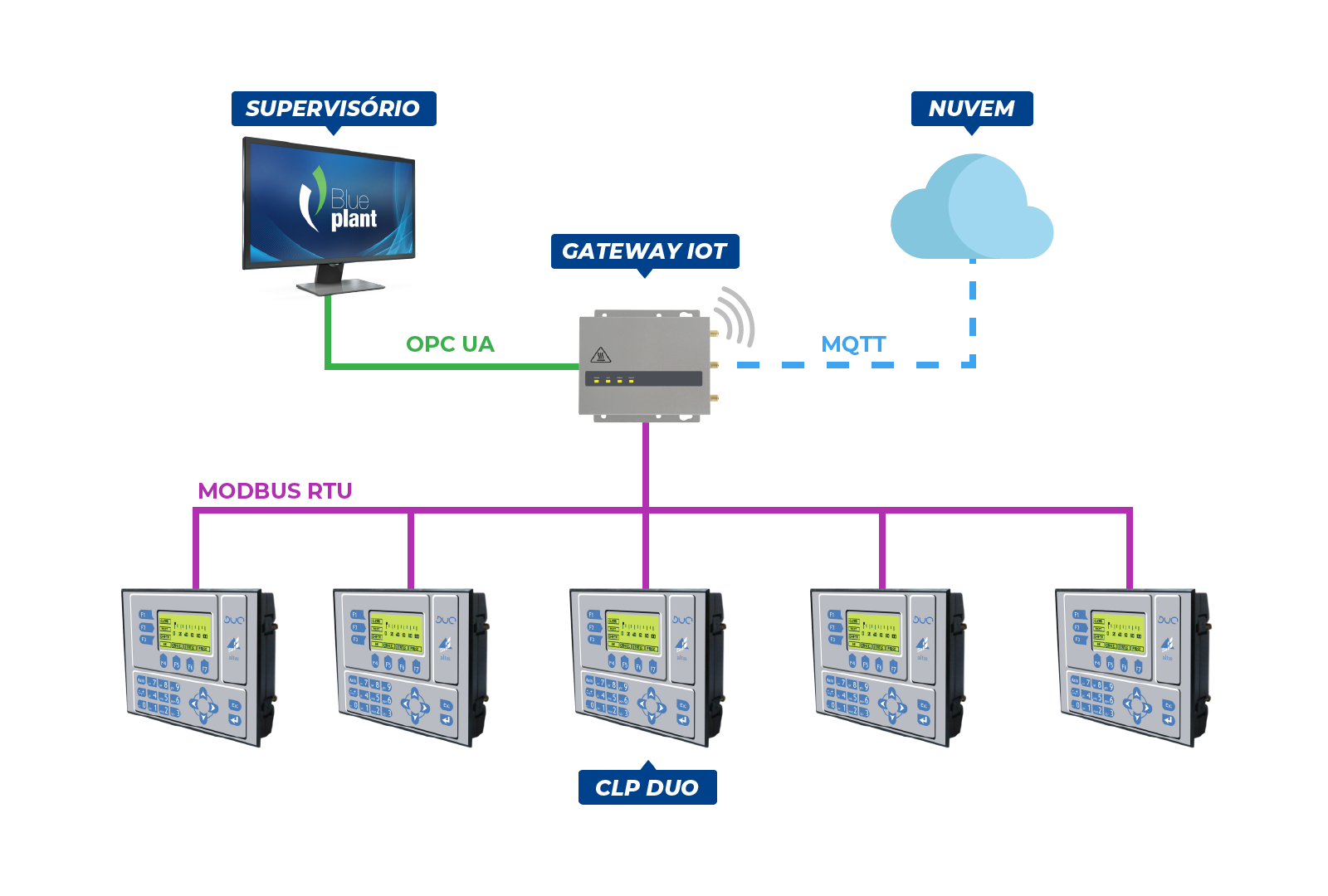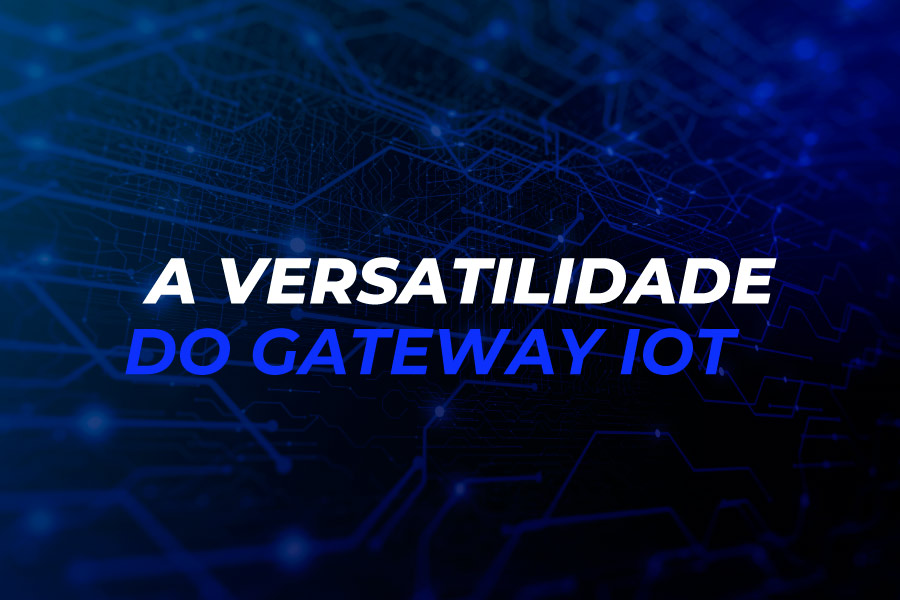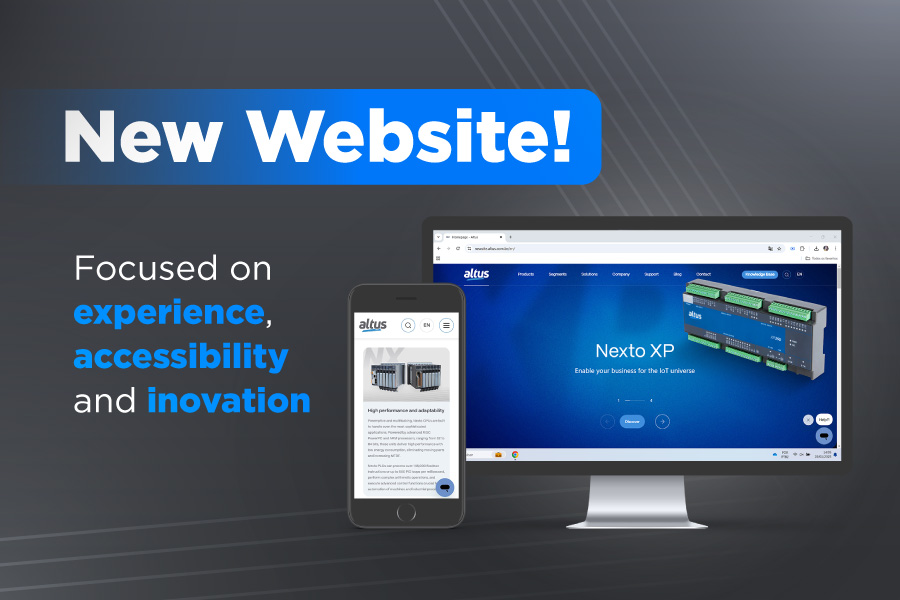Increasingly present in our lives, technology offers a series of smart and customizable devices that promise to make our daily lives easier. The concept of IoT, an acronym in English for Internet of Things, proposes connecting everyday objects, such as light bulbs, watches and cars, to a network, facilitating our routine and contributing to the evolution of devices, which become more interactive and intelligent.
The gateway, equipment, which we have already talked about here on the I&A Blog, is one of these devices. With it, it is possible to connect equipment located on different networks and that communicate using different standards. In this article, we will delve deeper into this concept and talk about the application of gateways in the IoT environment and how their use can benefit the industry!
What is an IoT gateway?
An English term for “gate” or “portal”, the IoT gateway works as a connection point between various technologies, allowing equipment that uses different communication standards to talk and exchange data with each other. In other words, it serves as an entry and exit point for all information on the network, facilitating the exchange of information by adapting physical means and communication protocols.
The IoT gateway is also a smart device that can be used in Edge Computing, routing the exchange of data between equipment and the PLC responsible for the process, instead of storing them in a database or in the cloud. This avoids excessive information outside of devices and delays in communication. In this way, the device filters unnecessary or routine information that prevents the equipment from functioning and transmits only unusual or critical data, avoiding system overload.
Another positive point of using IoT gateways is the reduction of infrastructure costs. As the most advanced sensors on the market have the capacity to generate and process tens of thousands of data per second, they do not require the use of a PLC to process this information before storing it. However, it is necessary to use some resource to take data from the sensors to the supervision system. In this case, IoT gateways can be used to send the information collected by sensors directly to the local database or to the cloud, reducing infrastructure spending and increasing process efficiency.
How to use an IoT gateway in your factory
Because they are fully connected to the Internet of Things concept, IoT gateways have a wide range of uses. One of these applications is in communication networks in smart office buildings. In building applications like these, it is common to have hundreds of sensors to measure variables such as temperature, lighting, energy efficiency, air quality and security system signals, which ends up generating a large volume of data. Here, the gateway's job is to transmit this data to the PLC. In the case of variable temperature, it can send data to the control device informing whether it is colder or hotter than predetermined in the system. If the temperature is too high, the PLC can adjust the air conditioning setting and cool the room.
high connectivity devices such as IoT gateways are easily applicable in architectures using Altus products. As an example, let's imagine a factory with different processes interconnected through a MODBUS RTU network and controlled by PLCs from DUO Series. To increase the level of control and qualify the decision-making process, the management team decides to upgrade the plant by installing a supervision system with interactive dashboards. In order for information from the factory floor to be presented by the new system, it is necessary to collect data directly from the PLCs.
However, there is a problem: the DUO family equipment communicates only through the protocol used in the control network, MODBUS RTU, and also, they do not have Ethernet type interfaces, only serial ports of the type RS-485 and RS-232. In this case, so that the new supervision system could be installed without major changes to the control architecture, an IoT gateway could be used as a translator between the PLC and the supervisory system. The equipment could receive data from the controller in MODBUS RTU, through one of the serial interfaces, and convert it to a language compatible with the supervisor, such as the OPC UA protocol.

Another option would be to write the collected information to a database hosted in the cloud. In this case, the gateway could convert MODBUS RTU data to the MQTT standard, one of the most used communication protocols in IoT applications today. This same example is valid for different network architectures that use any PLC or equipment, from Altus or third parties, that supports a protocol and requires conversion to a different standard.
CLP Nexto Xpress as IoT gateway
For applications that require greater processing capacity and connectivity level from the gateway, a programmable controller can be applied as a translation and connection device between different machines and systems. However, to achieve this, the equipment in question must have advanced technology and support different communication protocols, as is the case with Nexto Xpress, Altus IoT ready PLC.
An example we can cite is the use of the PLC as an IoT gateway for communication between older Altus product families such as the AL, Quark, and Piccoloseries, and new IoT devices. In this case, Xpress can translate the data sent by equipment, which uses the ALNET I standard, to EtherNet/IP or a more common protocol today. As in the previous example, the Nexto Xpress PLC could also transmit this data to a supervisor, using the OPC UA or MODBUS TCP protocols, and to a cloud database, using MQTT.

Furthermore, Altus' compact controller can also be used as a communications intermediary between intelligent sensors and actuators and the supervision system. Because they have the capacity to process the collected data, this type of field device can forward interpretable information directly to the supervisory resource. However, as these devices generally only have serial interfaces, with the MODBUS RTU protocol, the PLC Xpress can convert the data to the MODBUS TCP or OPC UA standard and forward the information directly to the supervisory software.

Discover our IoT Gateway
Bring more connectivity, security and control to your applications, with our Gateway IoT TLE3-21100.
With it, your business has a wide variety of communication resources and network functions available, it is the ideal solution for telemetry applications /span> and remote access in the most different segments of the industry.
The TLE3-21100 IoT Gateway TLE3-21100 supports WAN VPN. type IPSecand OpenVPN, which makes it possible to create a private tunnel with your application wherever you are in a completely safe way.
Download the technical documentation and ask for a quote!












